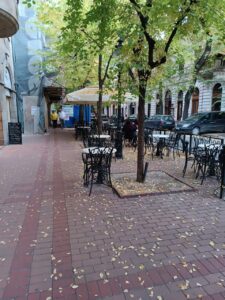How location affects real estate prices in Subotica.
Subotica, a picturesque city located in northern Serbia, has become an increasingly attractive destination for real estate investment. As with any market, the location of a property plays a crucial role in determining its value. Various factors, including proximity to amenities, historical significance, and urban development, contribute to the fluctuating real estate prices in Subotica. This article delves into how location impacts real estate prices in this vibrant city, providing insights for potential buyers and investors.
Proximity to Amenities
One of the most significant factors influencing real estate prices in Subotica is the proximity to essential amenities. Properties located near schools, hospitals, shopping centers, and recreational areas tend to command higher prices. Families, in particular, prioritize access to quality education and healthcare, making neighborhoods with these facilities more desirable. As a result, areas like the city center, which boasts a variety of shops, cafes, and cultural institutions, see a higher demand for housing.
Moreover, the availability of public transportation can significantly affect property values. Subotica’s well-connected public transport system allows residents to commute easily to work or school, making properties near bus and tram stops more appealing. As urbanization continues to grow, areas that offer convenient access to transportation hubs are likely to experience a surge in real estate prices, reflecting the demand for accessible living spaces.
In contrast, properties situated in more remote areas or those lacking nearby amenities often struggle to maintain their value. Buyers are less inclined to invest in homes that require long commutes or lack essential services, leading to a disparity in pricing across different neighborhoods. Thus, the proximity to amenities remains a critical determinant of real estate prices in Subotica.
Historical Significance and Cultural Appeal
Subotica is rich in history and culture, which significantly influences its real estate market. Properties located in historically significant areas, such as those near the city’s iconic Art Nouveau architecture, tend to attract higher prices. Buyers are often willing to pay a premium for homes that offer a glimpse into the city’s past, as well as the charm and character associated with these locations.
Additionally, the cultural appeal of Subotica, with its vibrant festivals, art galleries, and theaters, enhances the desirability of certain neighborhoods. Areas that host cultural events or are close to artistic hubs often see a rise in property values as they attract individuals who appreciate the arts and community engagement. This cultural vibrancy not only enriches the lives of residents but also contributes to a thriving real estate market.
Conversely, neighborhoods that lack historical significance or cultural activities may struggle to attract buyers. Properties in these areas may experience stagnant prices or even depreciation, as the allure of living in a culturally rich environment becomes a deciding factor for many homebuyers. Therefore, the historical and cultural context of a location plays a vital role in shaping real estate prices in Subotica.
Urban Development and Infrastructure
Urban development is another critical factor that affects real estate prices in Subotica. As the city continues to grow and modernize, areas undergoing significant infrastructure improvements often see a corresponding increase in property values. Investments in roads, public transport, and utilities can make previously undervalued neighborhoods more attractive to potential buyers, leading to a surge in demand and prices.
Furthermore, the local government’s initiatives to promote economic growth and urban renewal can have a profound impact on real estate prices. Projects aimed at revitalizing underdeveloped areas or enhancing public spaces can transform neighborhoods, making them more appealing to both residents and investors. As these areas become more desirable, property values are likely to rise, reflecting the increased interest and investment.
However, urban development can also lead to gentrification, where rising property values displace long-time residents. This phenomenon can create tension within communities as the character of neighborhoods changes. While urban development can boost real estate prices, it is essential for city planners and stakeholders to consider the social implications of such growth. Balancing development with community needs is crucial to ensuring that Subotica remains an inclusive and vibrant city.
In conclusion, the interplay between location and real estate prices in Subotica is multifaceted and influenced by various factors. Proximity to amenities, historical significance, cultural appeal, and urban development all contribute to the dynamics of the real estate market in this charming city. For potential buyers and investors, understanding these factors is essential for making informed decisions in a market that continues to evolve. As Subotica grows and develops, the importance of location will remain a key determinant of property values, shaping the future of real estate in this vibrant community.



